The feeling of freedom:
Our course
GOLF COURSE
Our golf course for your special golfing experience.
BIRDIE-BOOK
Our 18 hole course
details
Course 1
A centred and long drive enables good players to attack the green directly. When hitting the green, however, it is essential to pay attention to the position of the flag, as there is both a strong break from right to left and a clear slope from the end of the green to the start of the green.
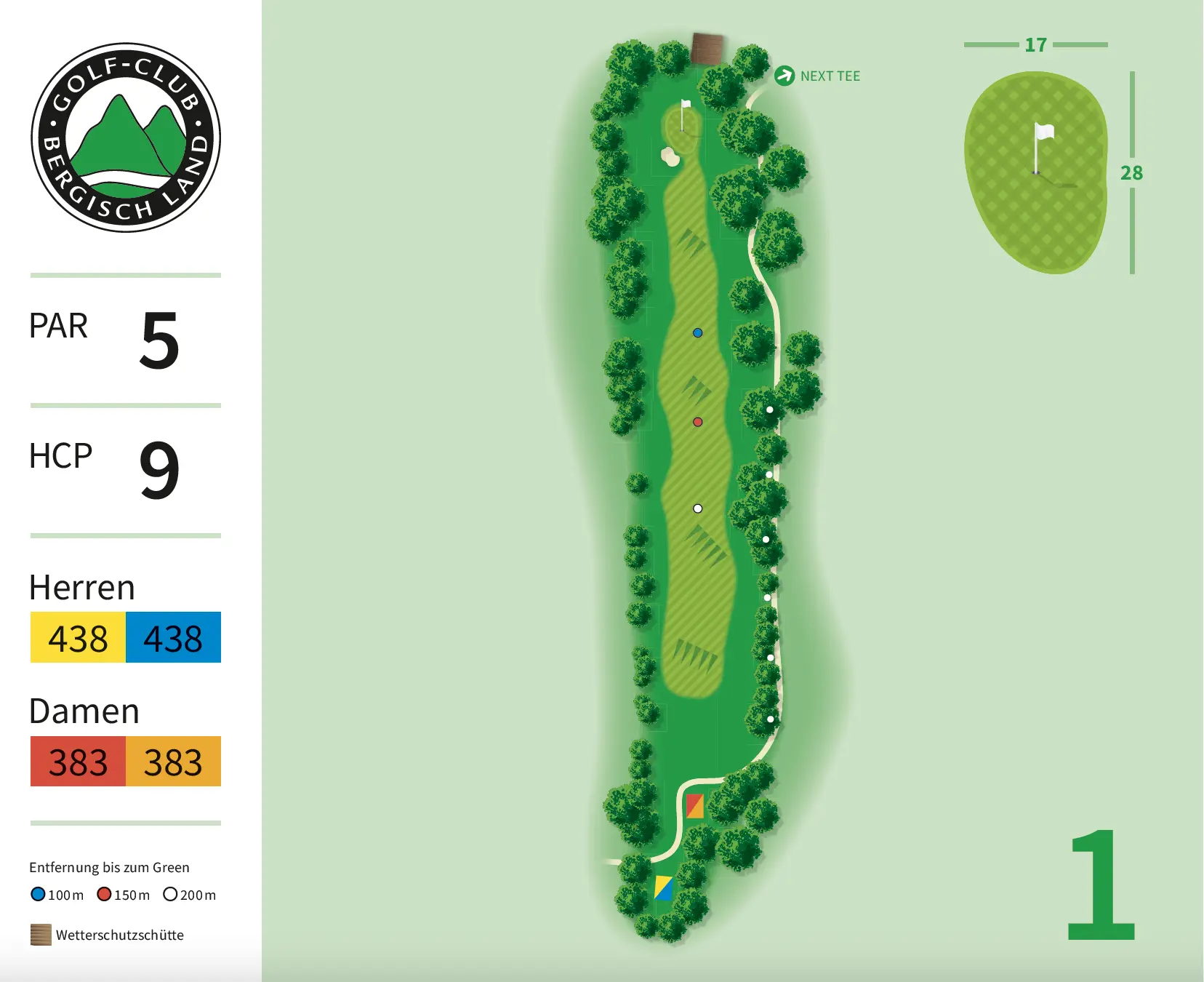
Course 2
Although the large green bunker is the only real obstacle, players who want to attack directly soon find themselves in it. This is because the course plays longer than you might think at first glance. This means that a targeted shot to the left side of the front green in conjunction with a good chip can be a good alternative plan.
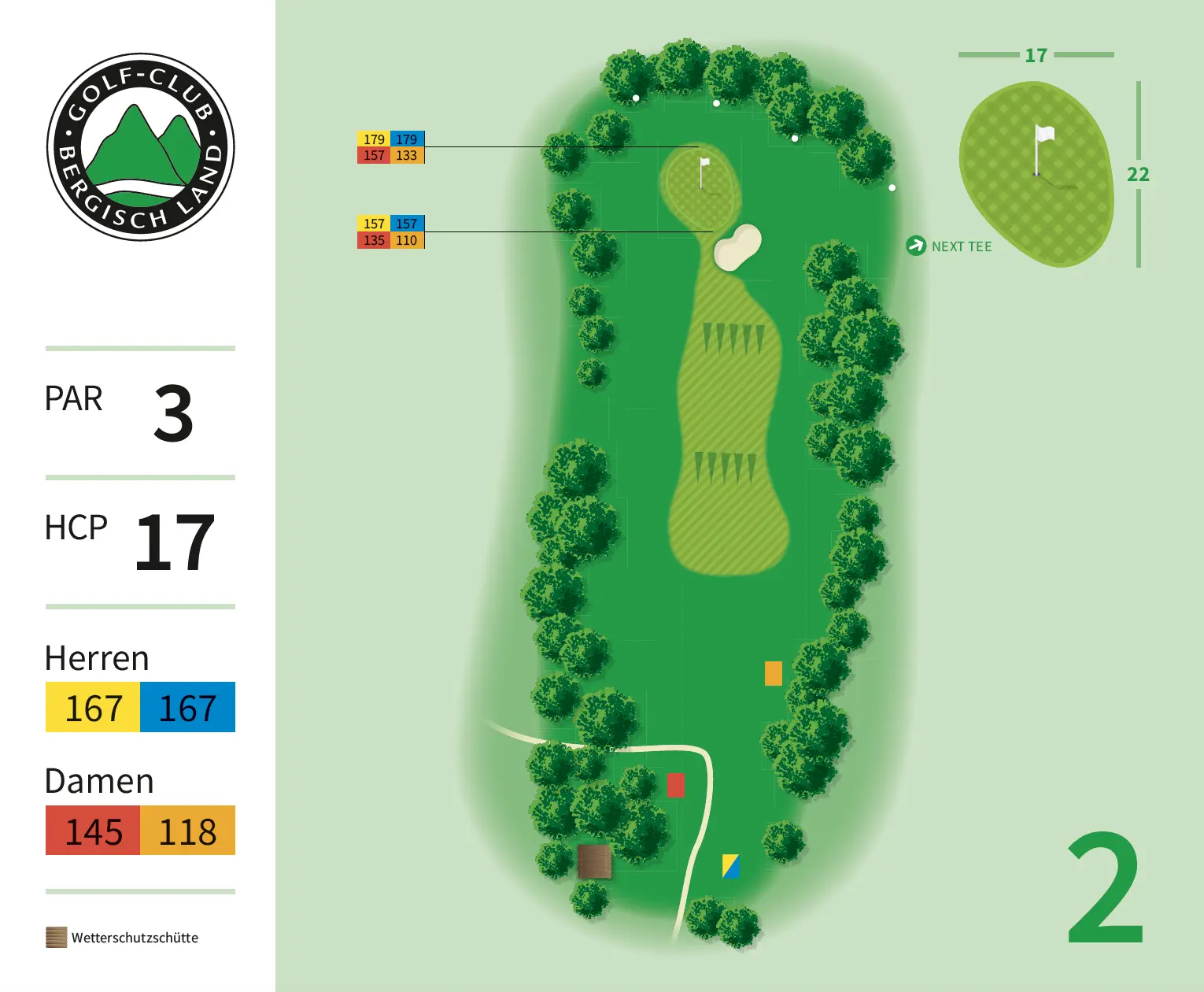
Course 3
Precision is required above all on the 3rd course, as many challenges await on the way to the flag. A continuous out of bounds on the left, lateral water on the right, trees on both sides and a stream make the course a real test of concentration and course management. The shot into the green is not without its challenges either, as lateral water and an out of bounds await again.
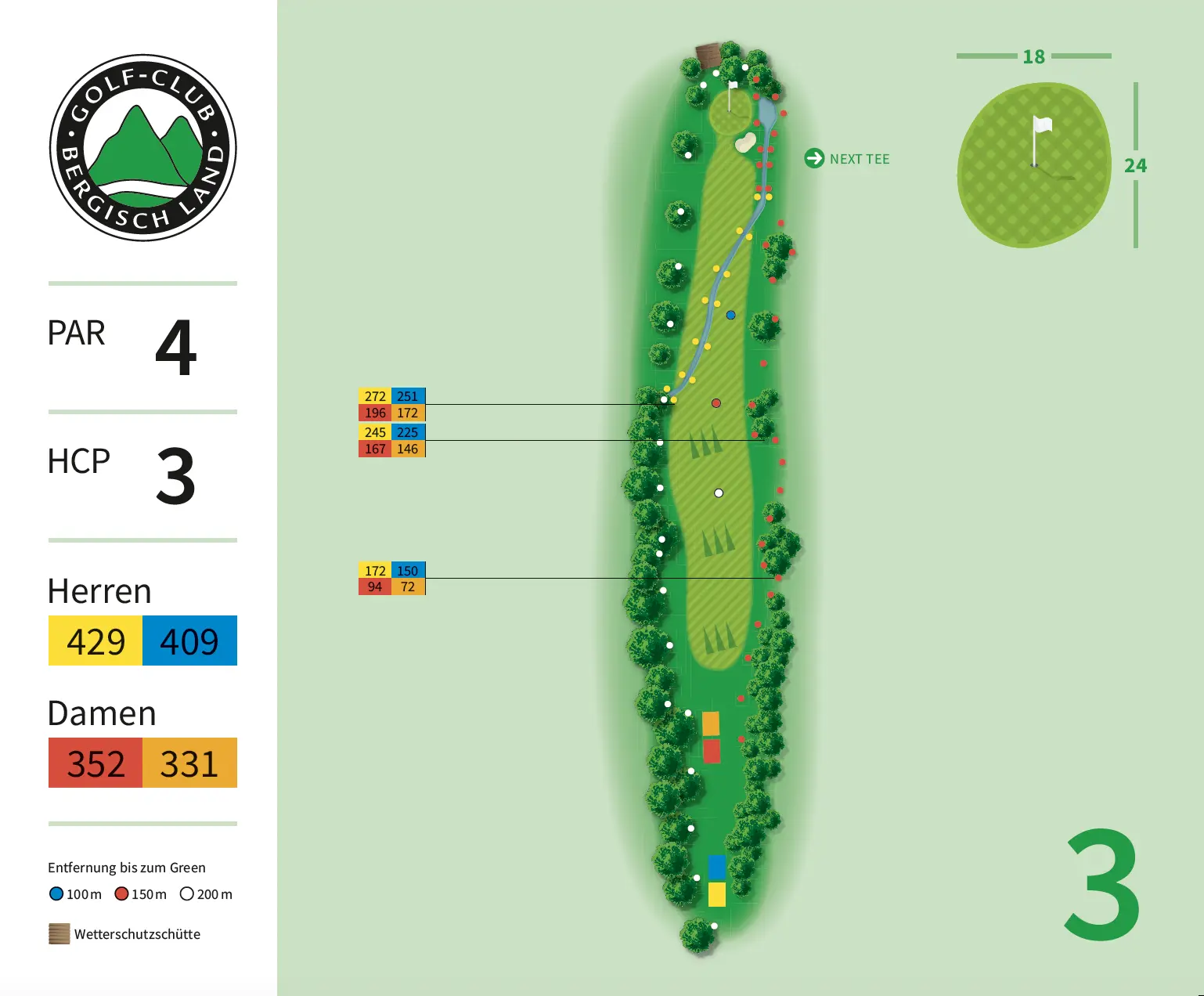
Course 4
Especially in summer, you should stop the drive to the left to avoid ending up under the trees due to the fairway slope. If the tee shot has a good length, the second shot can be played relatively easily onto the green. This is split in two by a large wave, so you should pay attention to the flag position here.
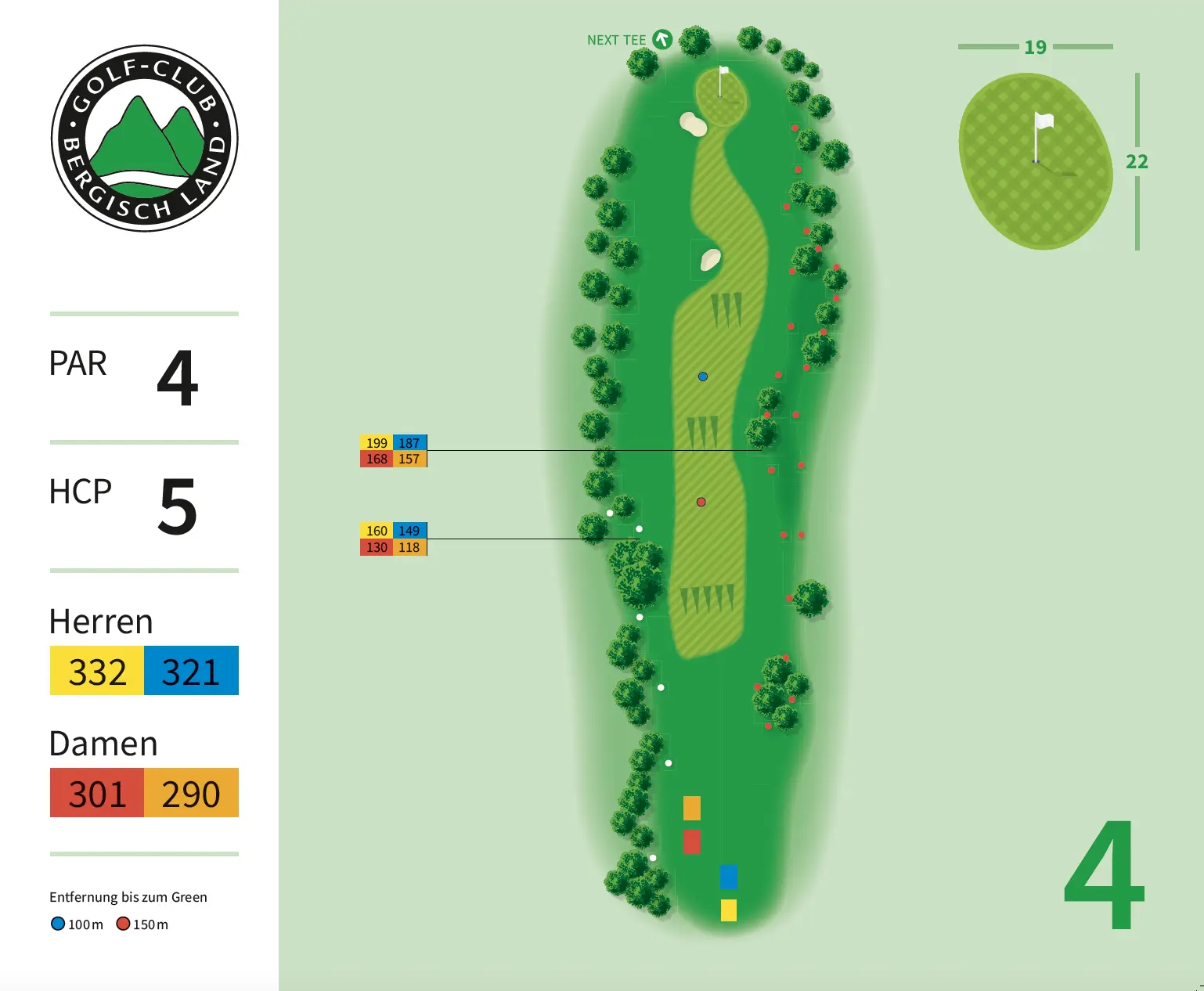
Course 5
With a perfect draw, you can make up many metres of distance here on the tee shot, but the water on the side will penalise overconfidence. In any case, the tee shot should be played over the visible wave. Once you have managed this, the green, which is well protected by a large bunker, can be reached from almost anywhere with a precise second shot.
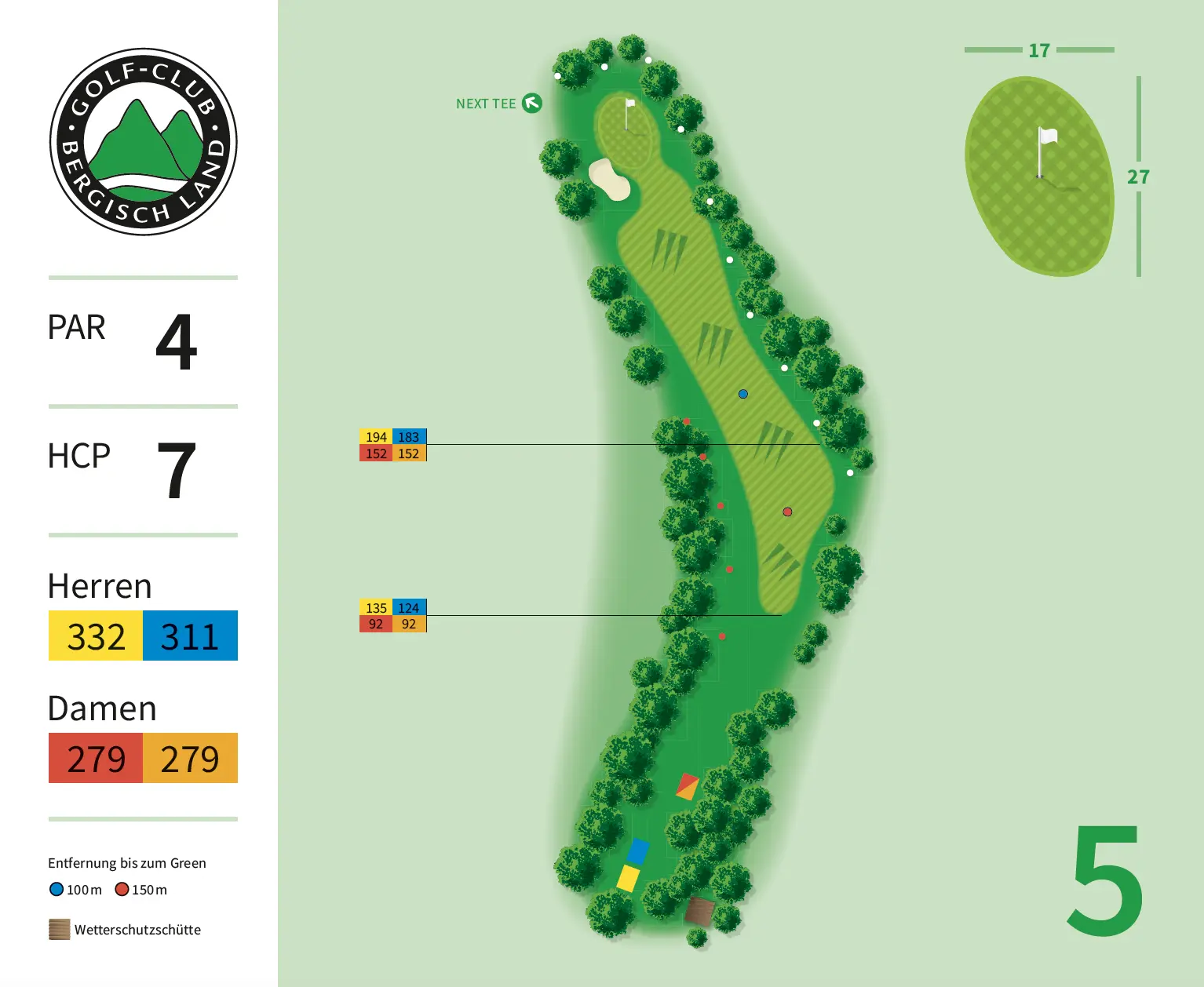
Course 6
Another course that combines a long game with precision. There is lateral water along both sides of the fairway and the large green is well defended by several bunkers, so hitting the green with the tee shot is not a matter of course. Incidentally, if you play the ball over the wood on the right-hand side, it will be in the rough, but is usually still in play.
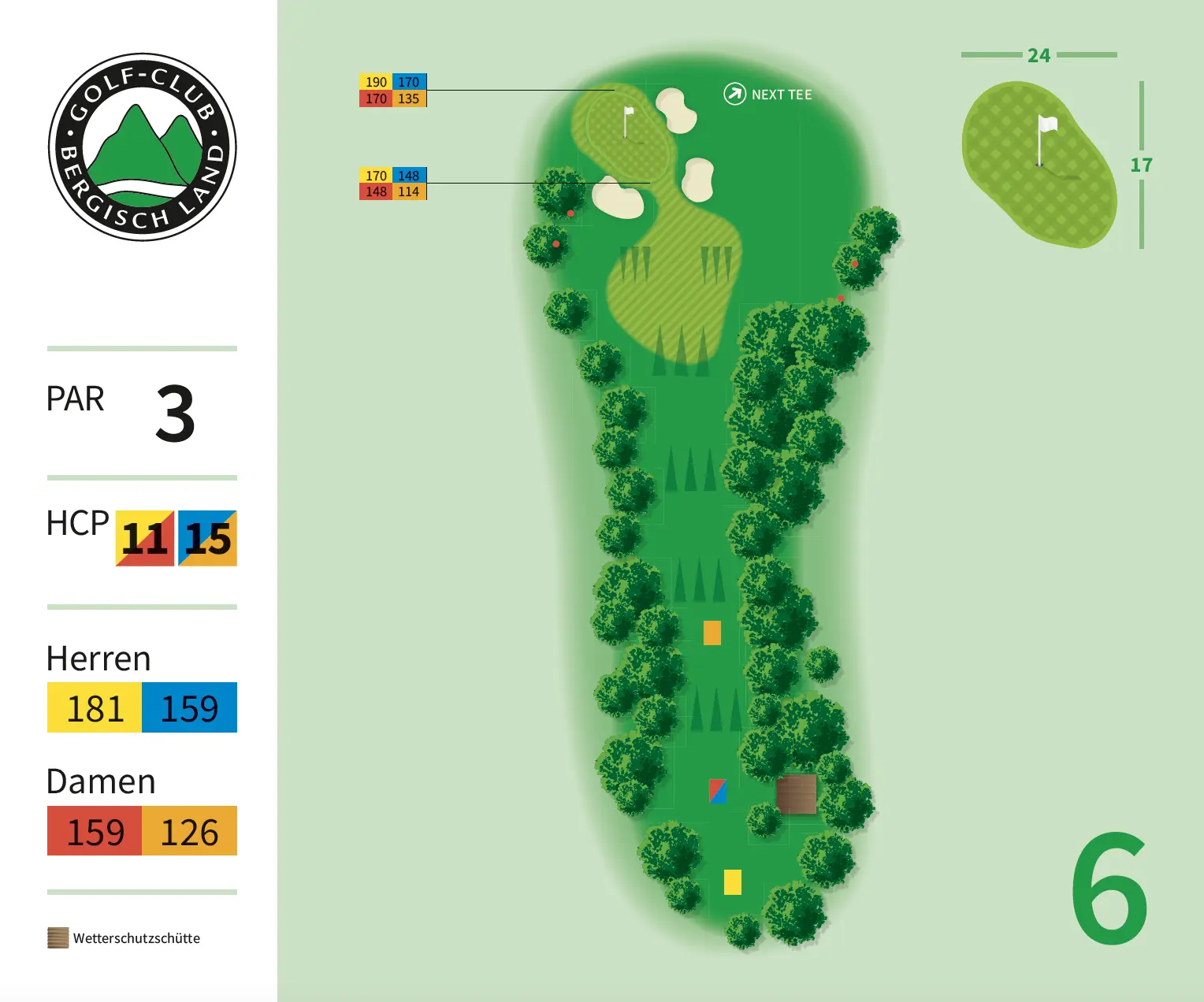
Course 7
You should be able to judge your own length well on this course, as it is particularly important to plan the landing points precisely. The ideal tee shot is definitely over the ditch, but not too far to the left, as the steep slope allows the ball to roll a long way. With the shot into the green, you have to overcome a pronounced water hazard, so if the distance is still very long, laying up could also be a good option.
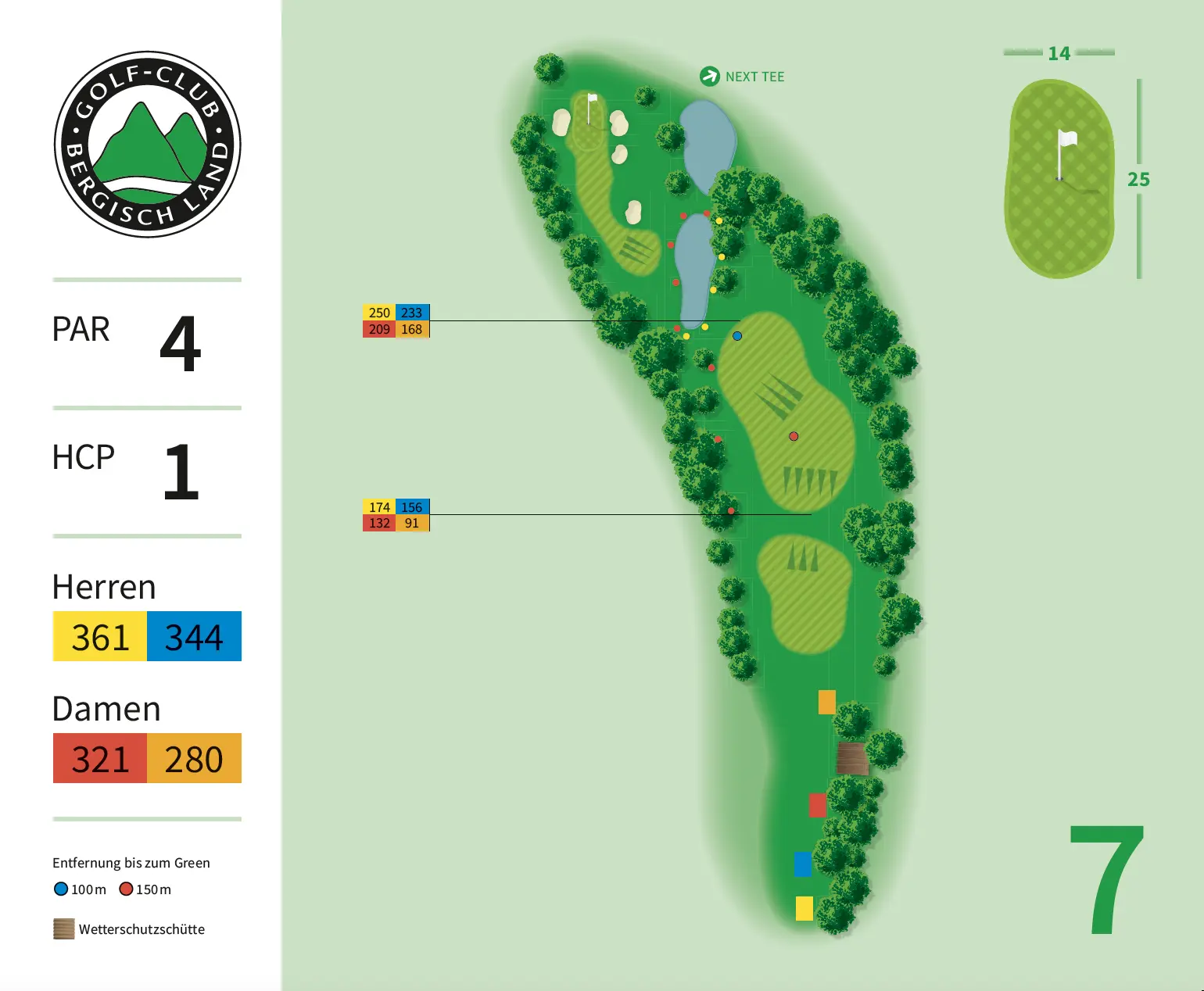
Course 8
A course that is very challenging, especially visually, because you have to play your drive directly over a large pond. If the 180 metre carry on the diagonal is too long for you, you should simply play your shot more to the left into the slope, then one iron is usually enough. The fairway shot and the shot into the green then no longer pose too many problems for the experienced golfer, which is why there is a good chance of a par or even a birdie here.
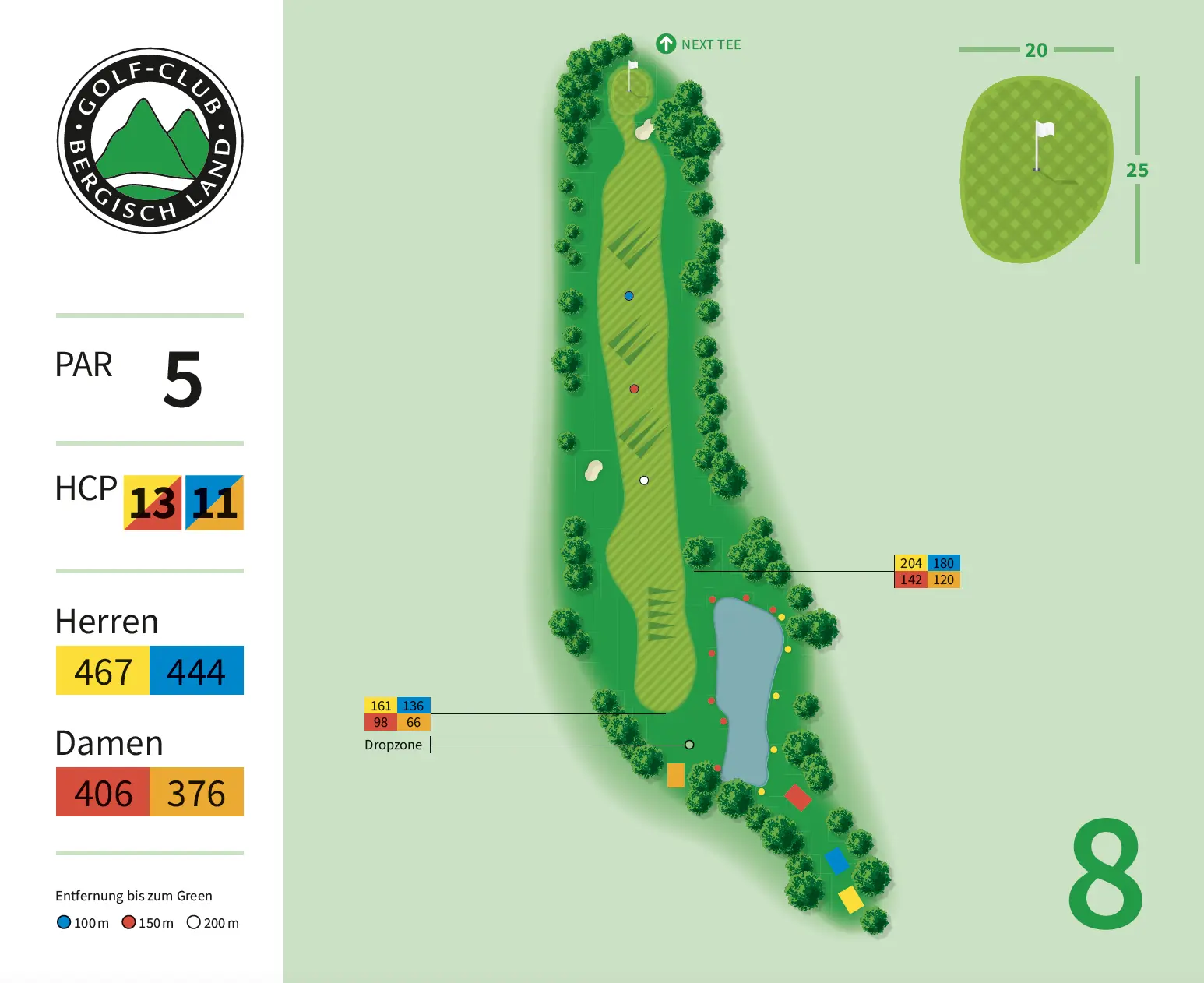
Course 9
Actually an easy par 3, as long as you stay straight and tee off long enough. If you don't hit the green, the left side is much more forgiving; on the right, the ball is often lost in the water on the side or completely lost.
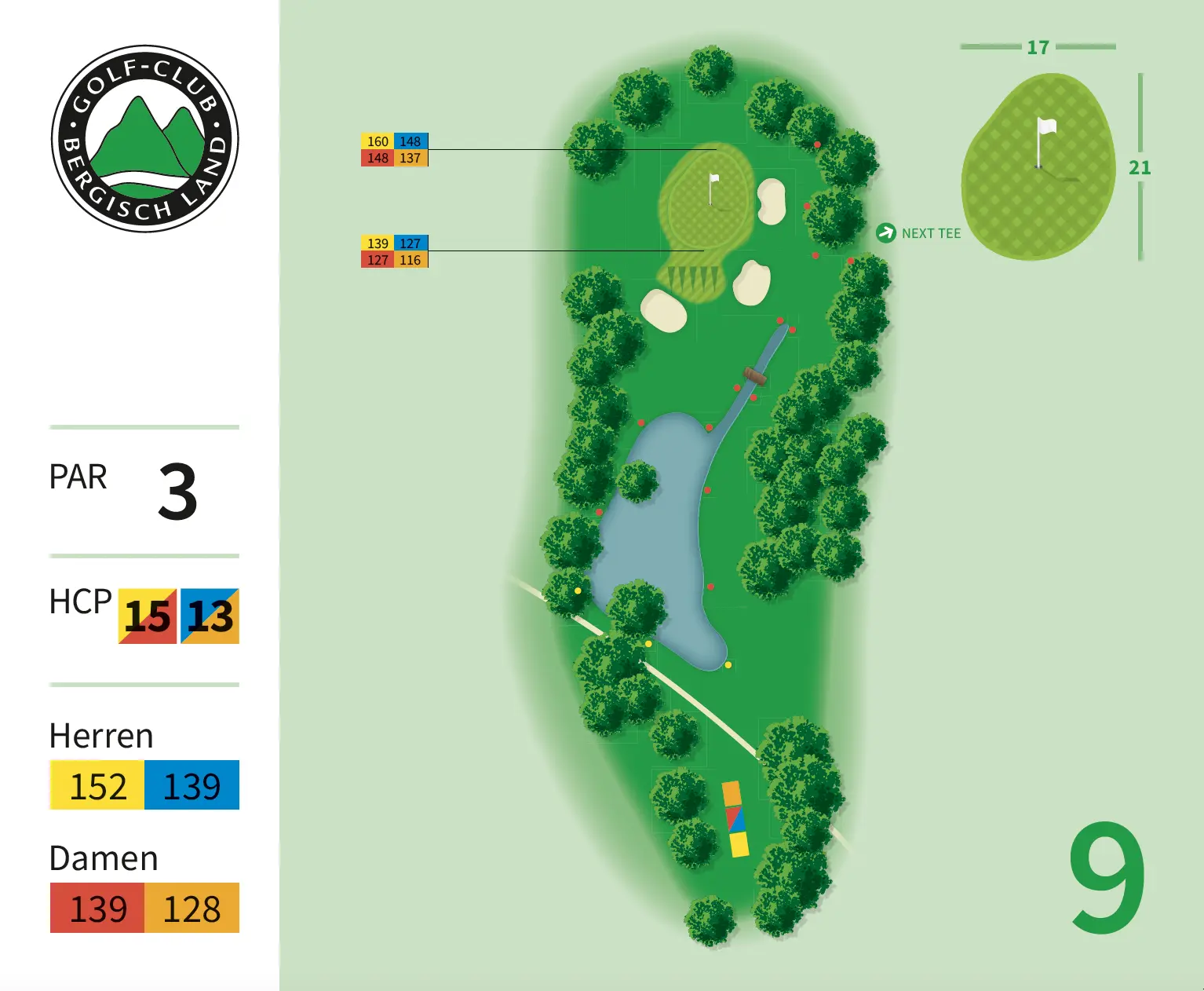
Course 10
A hole that requires two very good shots in succession. Although the fairway is generally very wide, there is only a relatively small optimal landing zone for the drive to the left of the fairway bunker, from where you can play directly to the green. When hitting a long shot into the green, you should not play too far to the right, as the ball inevitably runs the risk of rolling into the deep rough.
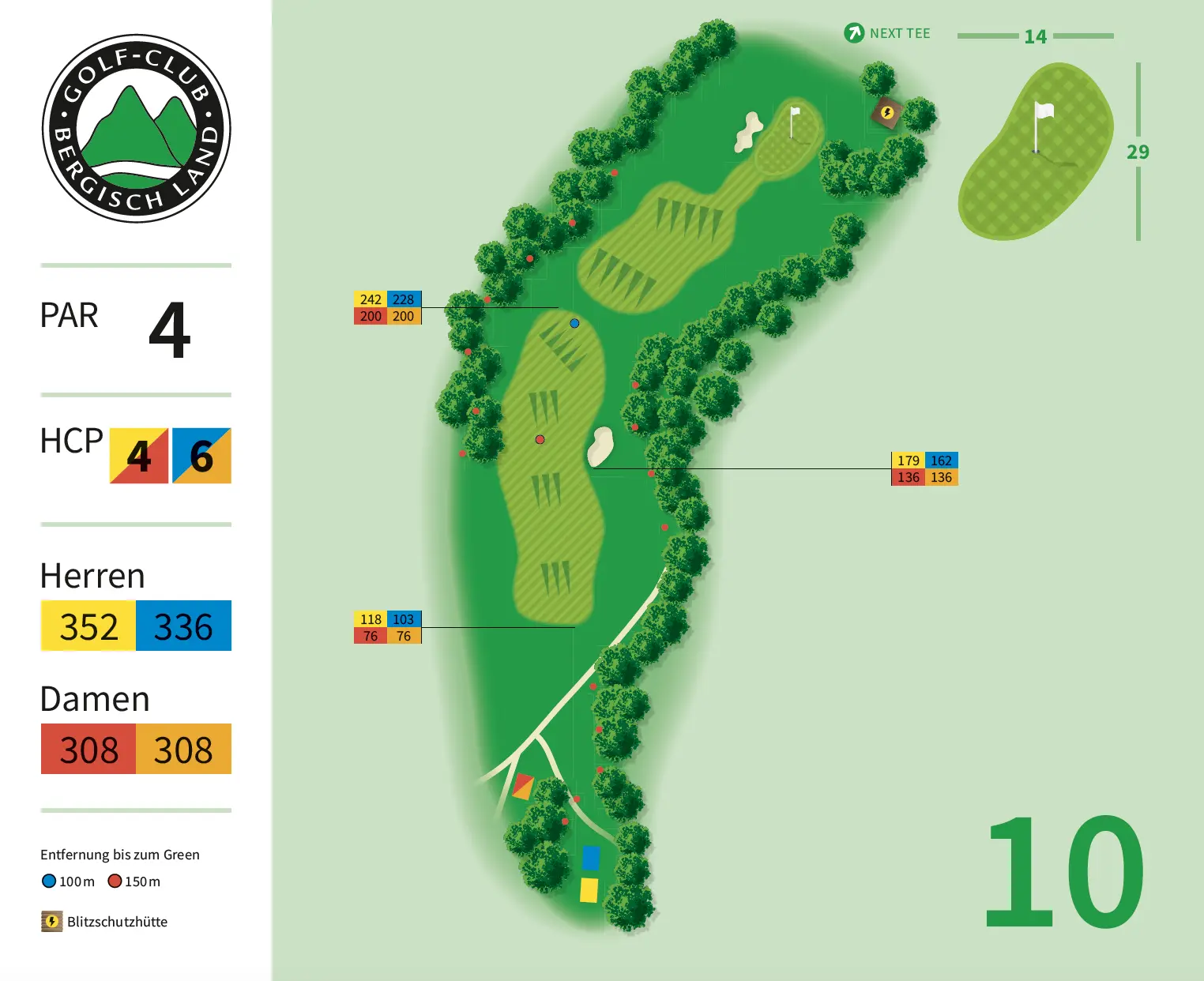
Course 11
The easiest hole in terms of handicap, but if you hit too far to the right, you can quickly record a double or triple bogey here. The left-hand green bunker is also no fun, especially if the subsequent bunker shot has to be played downhill onto the short flag.
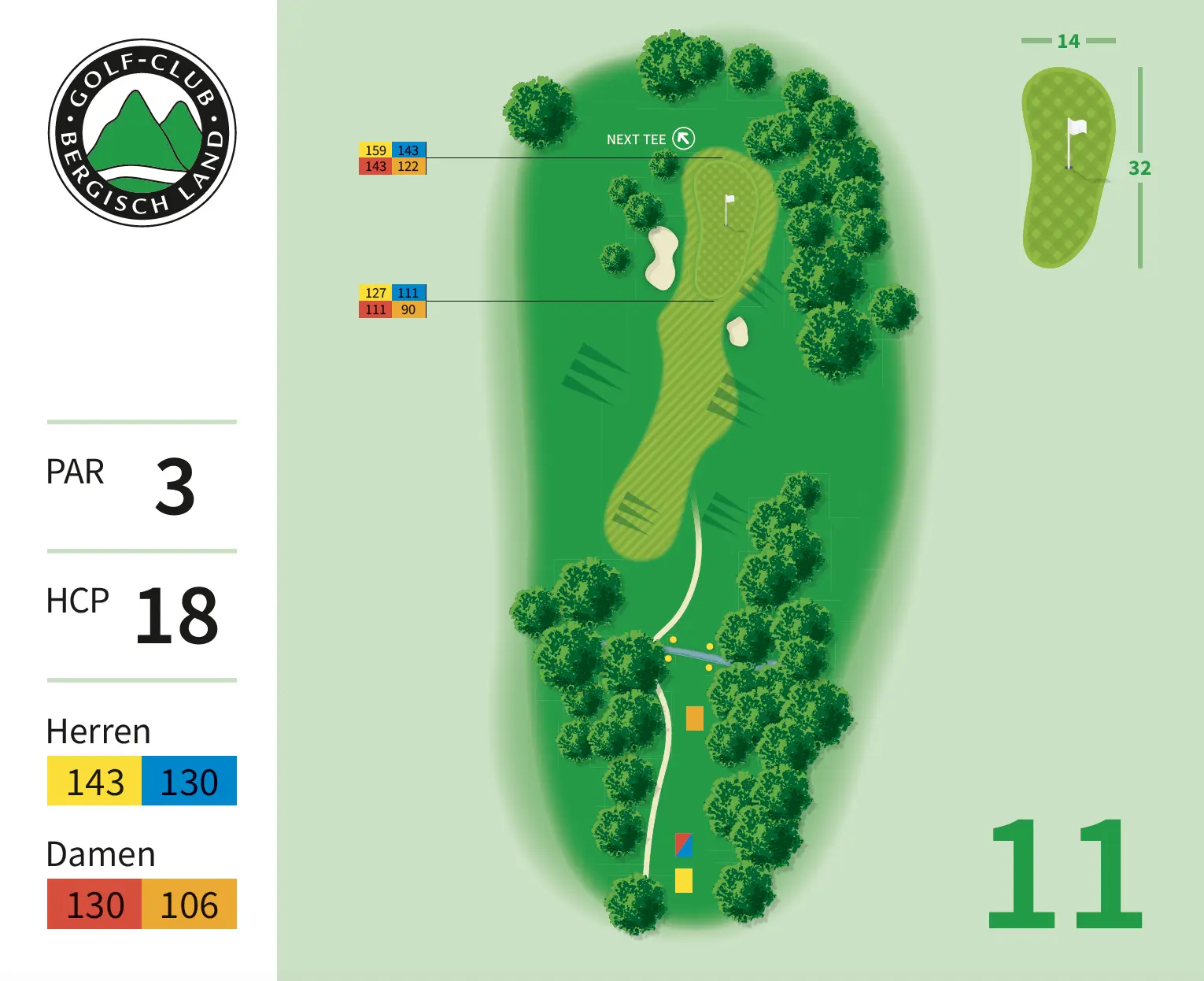
Course 12
Courageous players unpack the driver and usually only have a wedge into the green as a reward for a good tee shot. All other players need not despair, however, as the course is short enough for a conservative iron and still reach the green with the second shot and record a par.
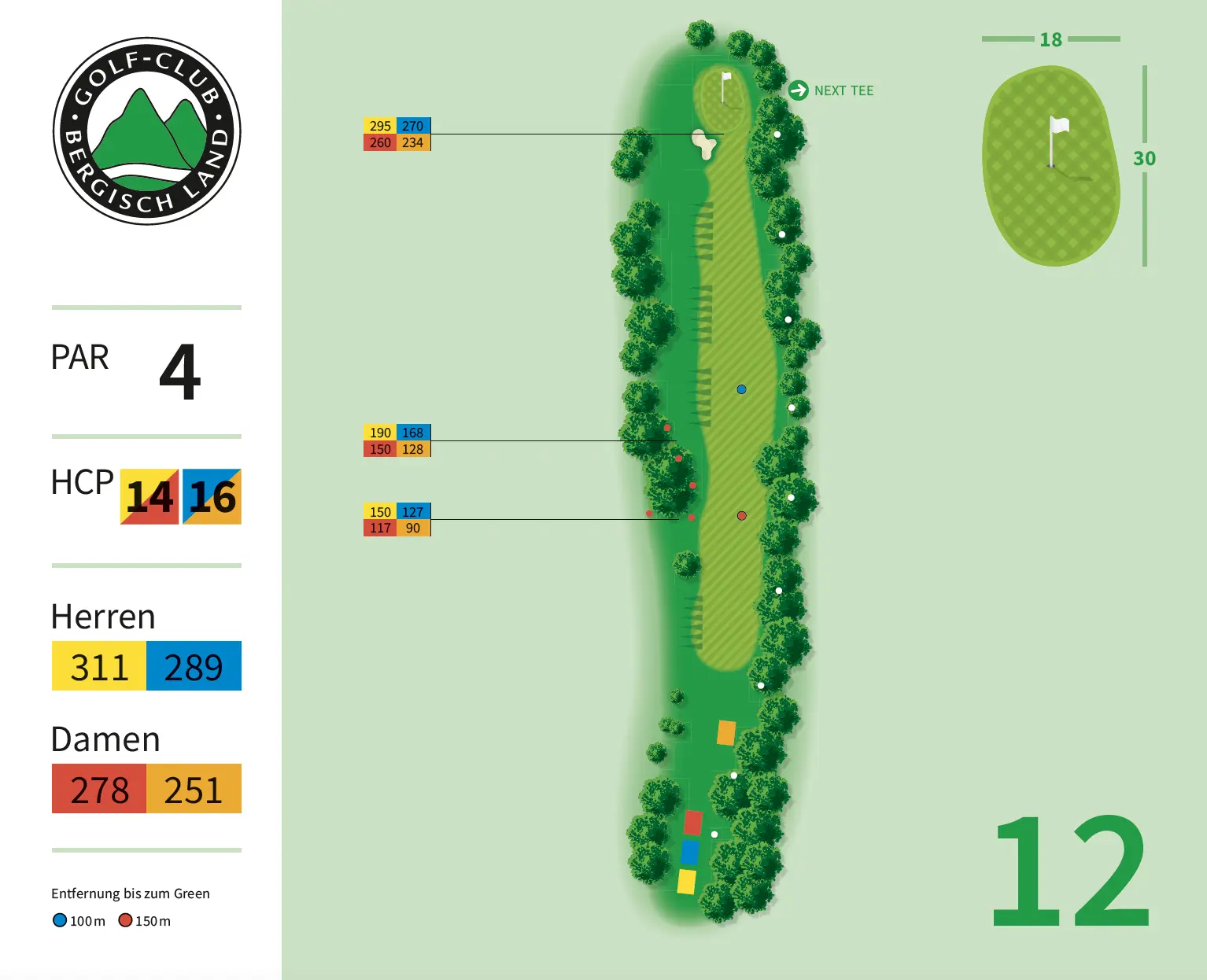
Course 13
The signature hole of Bergisch-Land. The tee shot is a feast for all friends of the well-groomed drive, and you don't have to be a single handicapper to record 250 metres or more here. If the drive is in the centre of the fairway, you shouldn't have too many problems on the way to par - provided you consistently avoid the many bunkers. Incidentally, the large green is heavily undulating, which doesn't exactly make long putts easy.
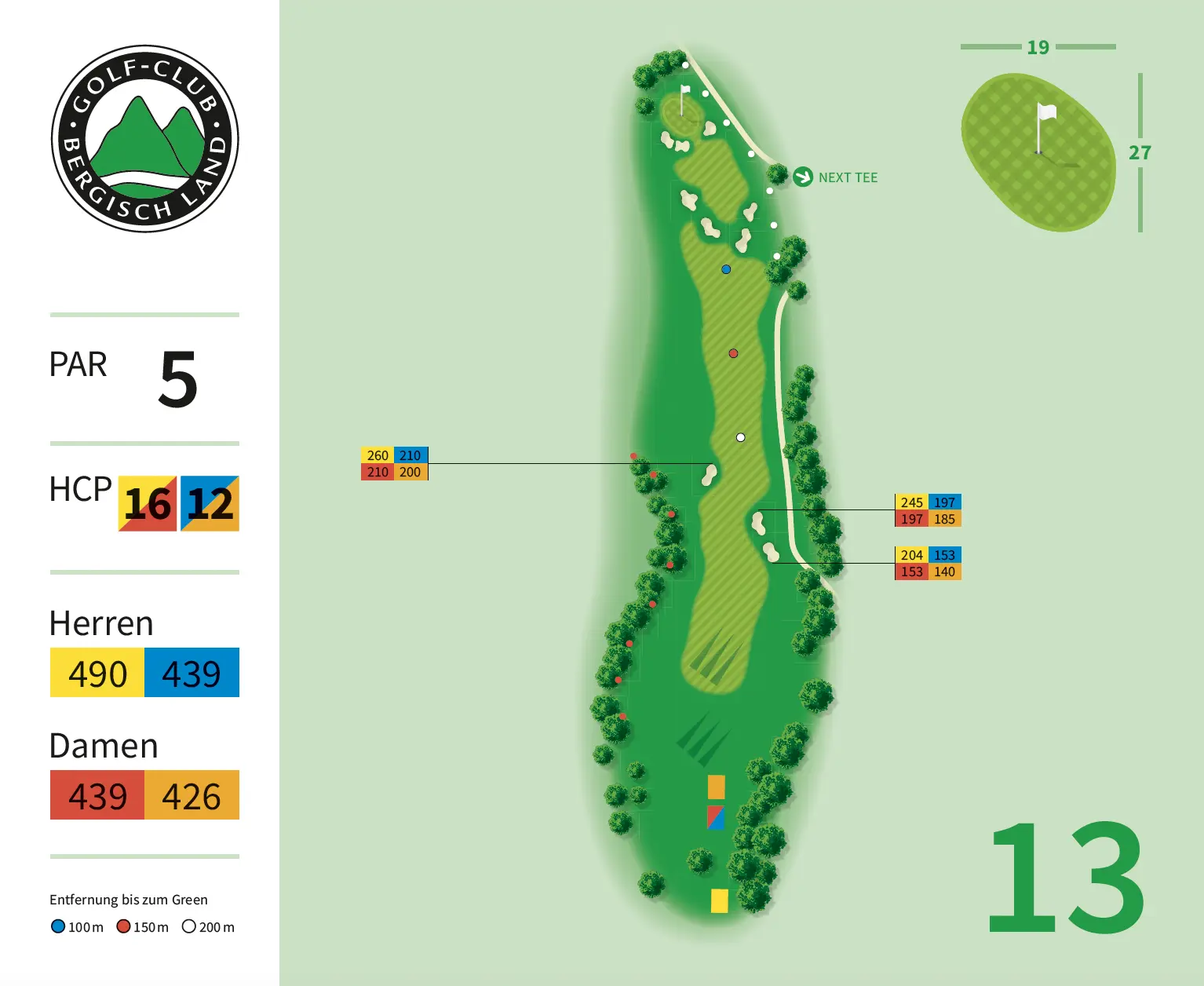
Course 14
If anyone wants to know: it takes a good 220 metres to carry over the bunker - and usually into the wind. All others should orientate themselves on the left edge of the bunker and then have a wide fairway in front of them. The second shot must not be hit too far to the left, as the subsequent path is already out of bounds. Not the second most difficult course in Bergisch-Land for nothing.
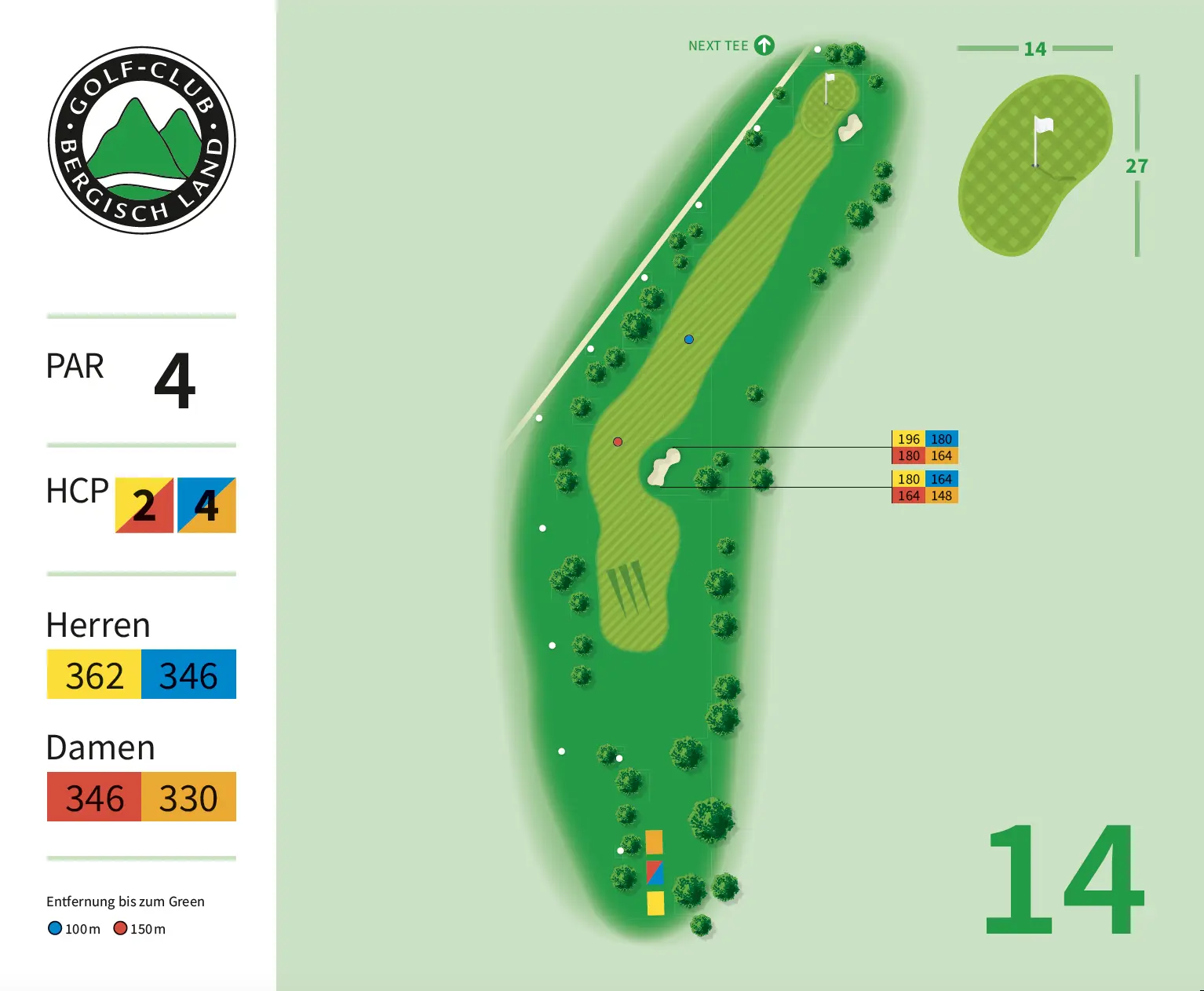
Course 15
In addition to length, a great deal of precision is required for the drive on this fairway if you want to avoid the three fairway bunkers. If the tee shot is in the middle of the fairway, you need good length control for the second shot, as you not only have to overcome a few metres of elevation on the way to the flag, but also deal with the fact that you cannot see the green.
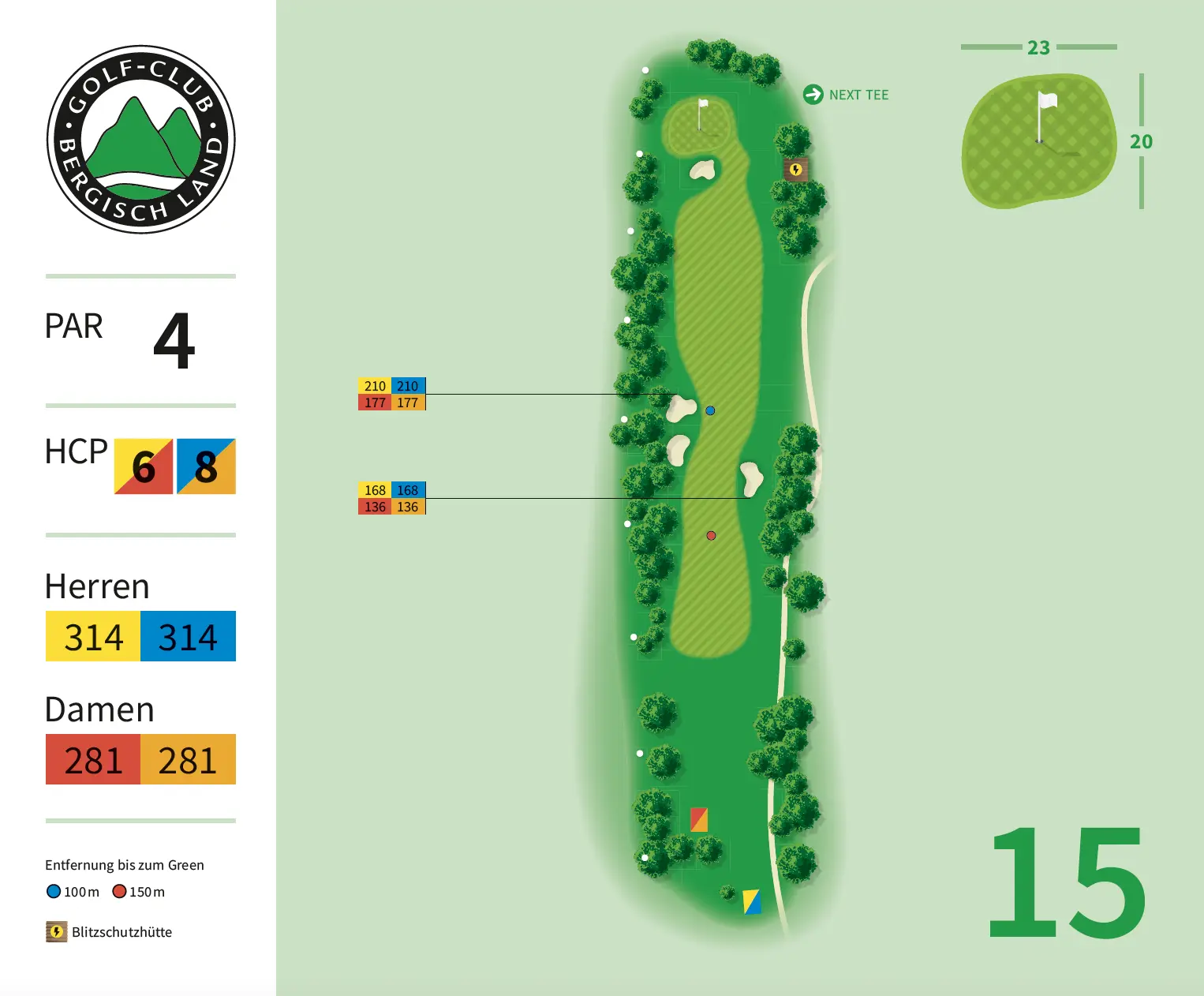
Course 16
Alignment is obviously very important on this tee shot, as the trees behind the first fairway bunker seem to attract the balls of many players almost magnetically. However, if you place your drive in the centre of the fairway, a par is a realistic target. When hitting across the path, all players should make sure that no pedestrians or cyclists are crossing.
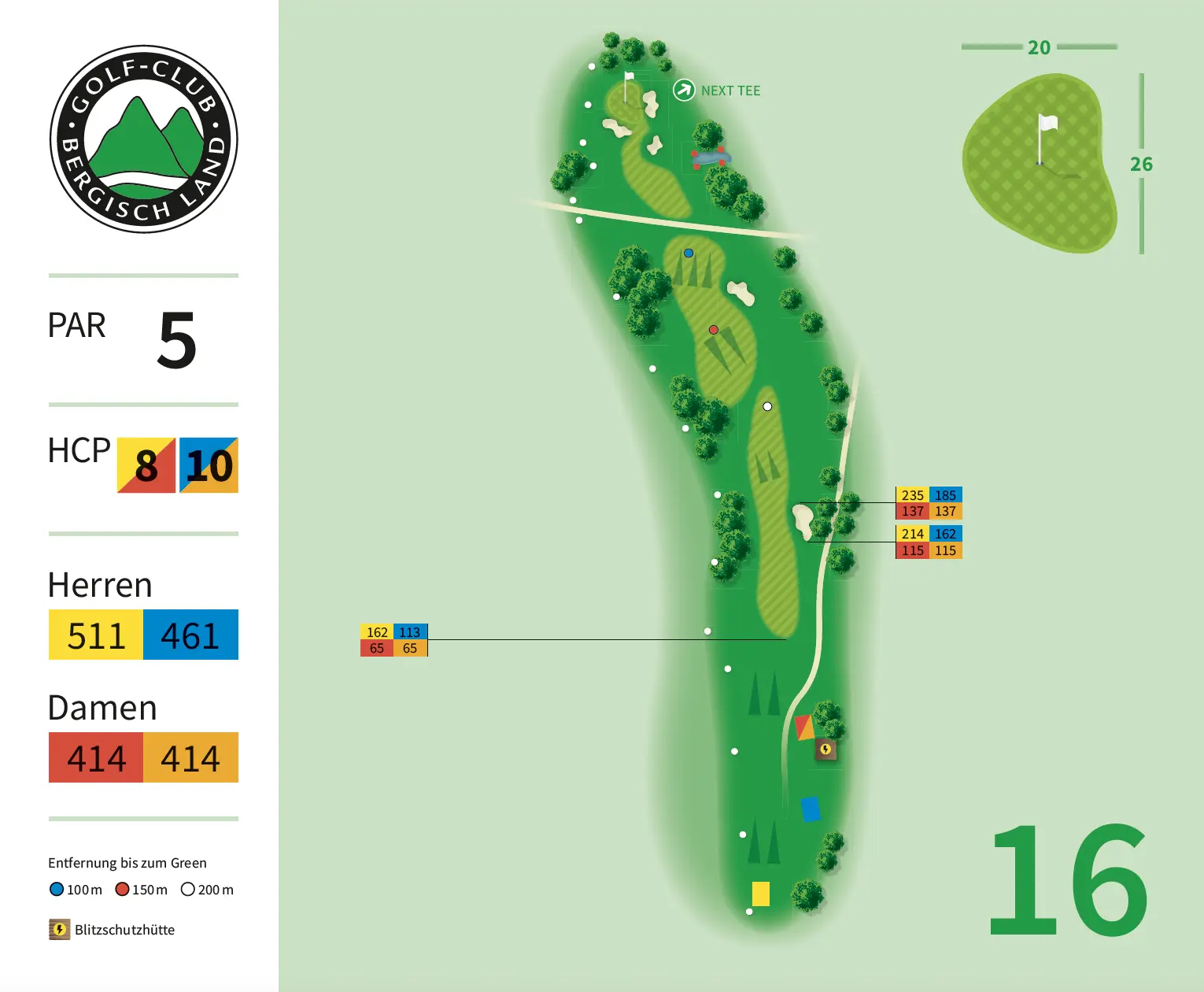
Course 17
Shortly before the end, the longest par 3 awaits, which is also well protected by two green bunkers. The green has a considerable height difference from front to back, so that different clubs must be used here depending on the lower and upper flag position.
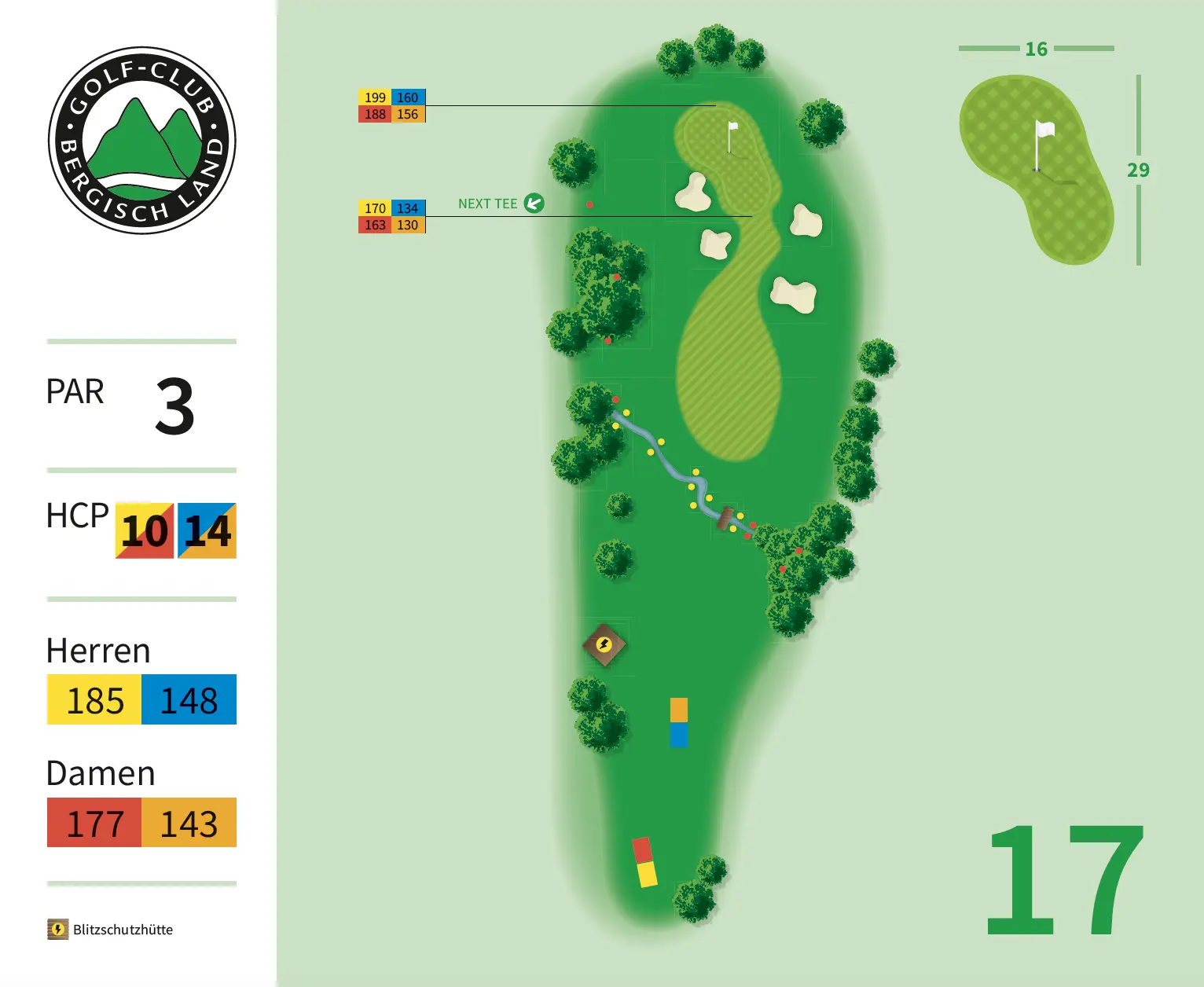
Course 18
The last par 5 offers another good chance for a par or even a birdie. The tee shot should be placed in the centre or right half of the fairway, as water lurks on the left side and the slope of the fairway likes to guide the balls there. The second shot should again be placed fairly centrally so that no trees obstruct the subsequent shot into the green.
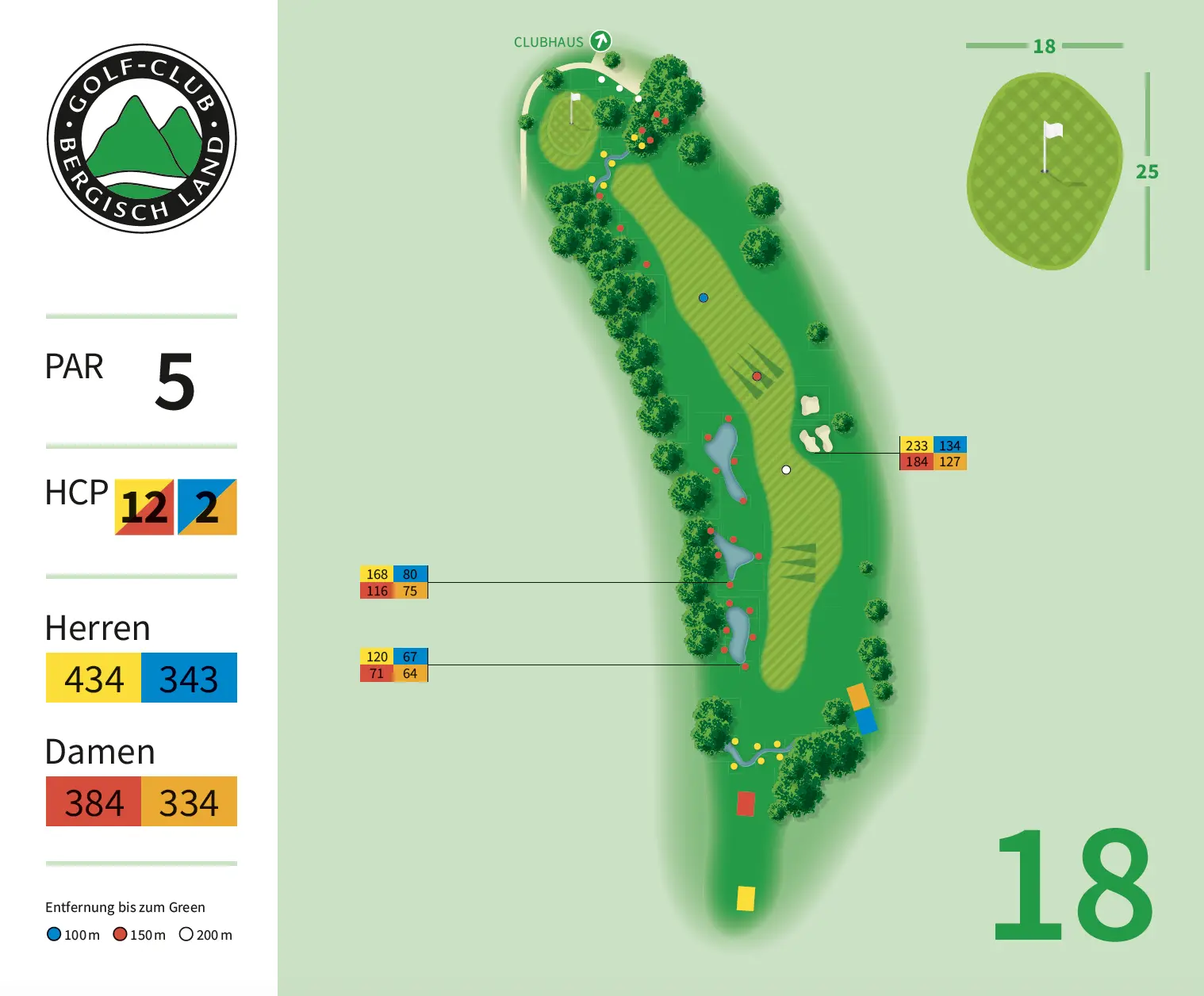
Practice grounds
Let's go: from
the training course to
the driving range.
The Golf Club Bergisch Land has a spacious practice area for its members and guests. There is a driving range with target greens, tee huts, scope and mat tees right next to the clubhouse. For long hitters there is a second driving range with grass tees on tee 1.
Directly behind the clubhouse on the way to the first tee is a putting green that corresponds to the course conditions, as well as the pitching area laid out over a wide area, which also fulfils all training requirements.
In addition, between the 10th and 13th holes there is another spacious practice area for pitch and bunker shots, directly adjacent to the clubhouse and the car parks.
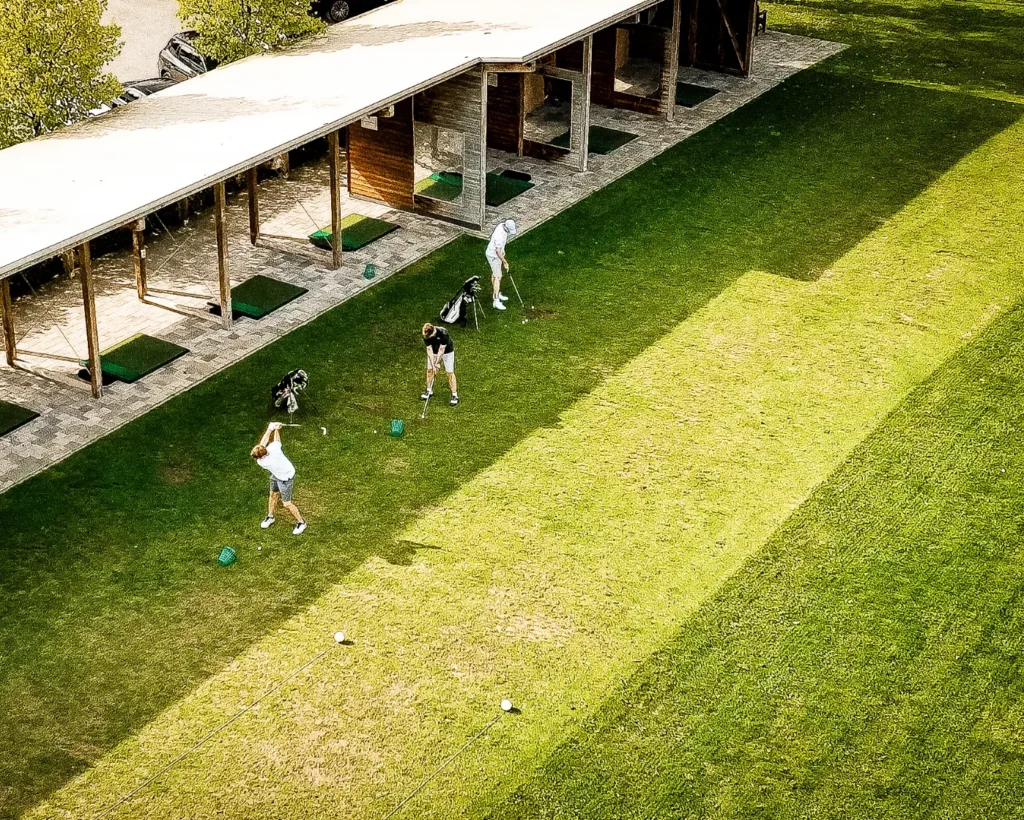
2
DrivinG
Ranges
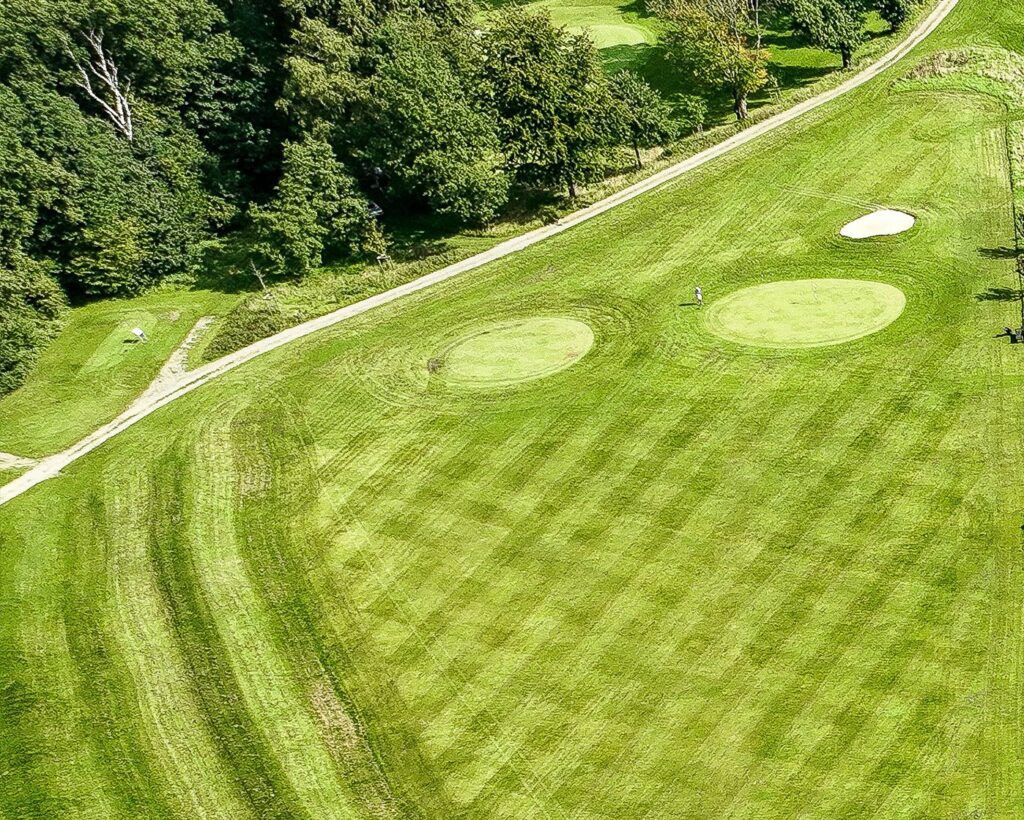
4
Practice
ground
COURSE ARCHITECTURE
Golf since 1928
In autumn 1928, the construction of a total of 9 holes, the design of which bore the signature of British golf course architect John S. F. Morrison, was already in full swing. Among other things, the Briton was known for his highly manicured greens, which are particularly evident on holes 6 and 9.
Thanks to some English starting aids, the 9-hole course was already playable in 1929.
The course architect, the first greenkeeper and the first coach were all English. Even the first grass seed came from the island where the game of golf had been born centuries before.
In the 1950s, the golf course was initially extended to 13 holes, again based on a design by J. S. F. Morrison. At the beginning of the 1960s, the course was then extended to 18 holes; in this case, the no less famous Bernhard von Limburger was in charge.
Bergisch Land Golf Club was and is very successful in sporting terms as well. Martin Kaymer and Marcel Siem, two of Germany's best-known golfers at present, both spent a large part of their amateur careers at Golf-Club Bergisch Land and used this opportunity as a springboard to a professional career. It is therefore not surprising that the Bergisch Land Golf Club's men's team excelled in the 1st Bundesliga for many years. Martin Kaymer is still an honorary member of the Bergisch Land Golf Club today.
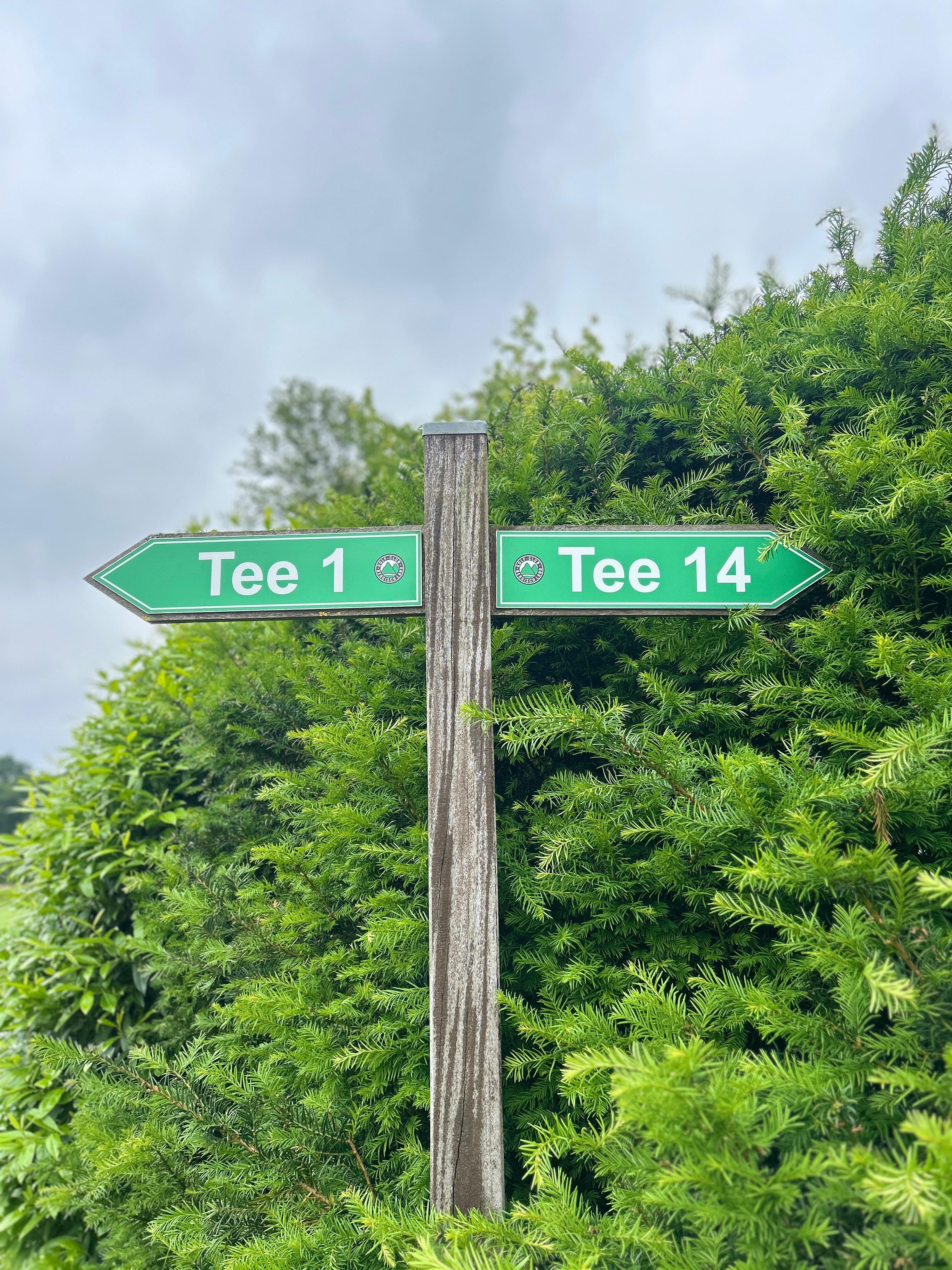
Gallery
A tour with a view

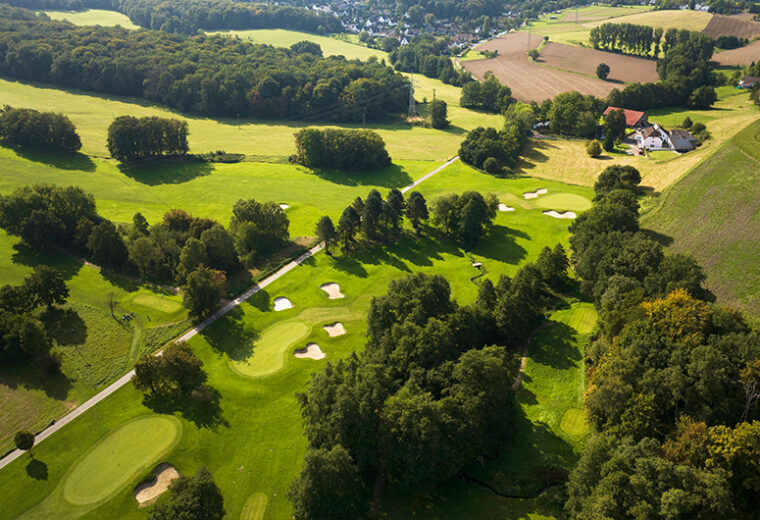

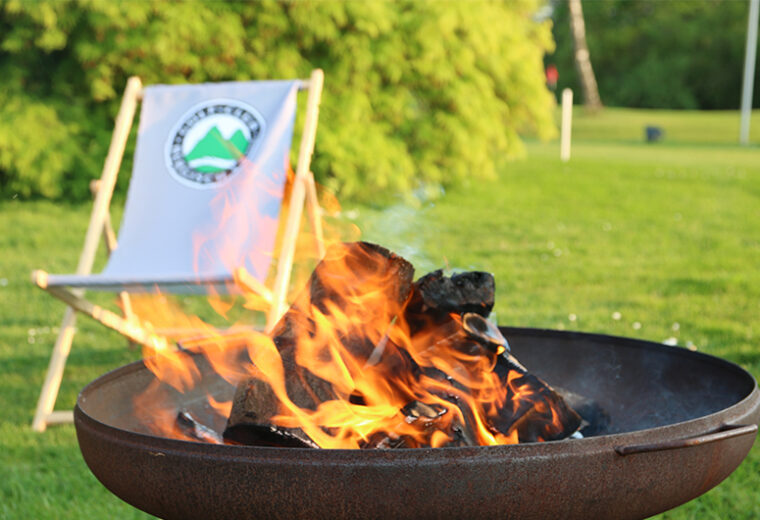
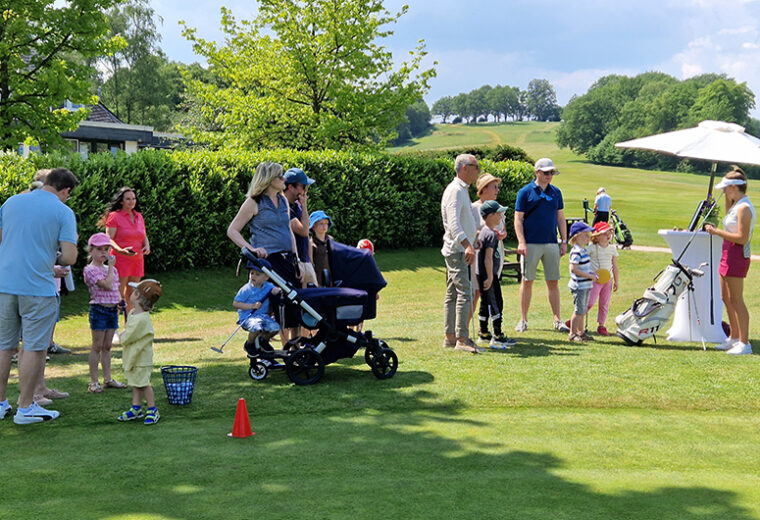
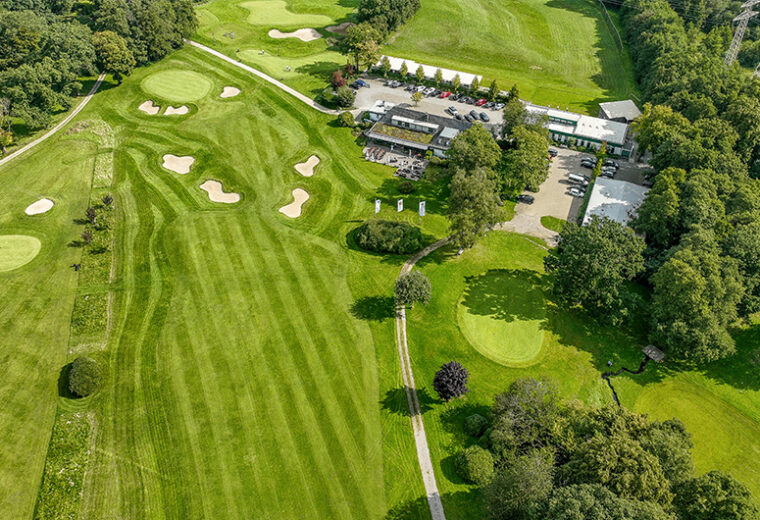
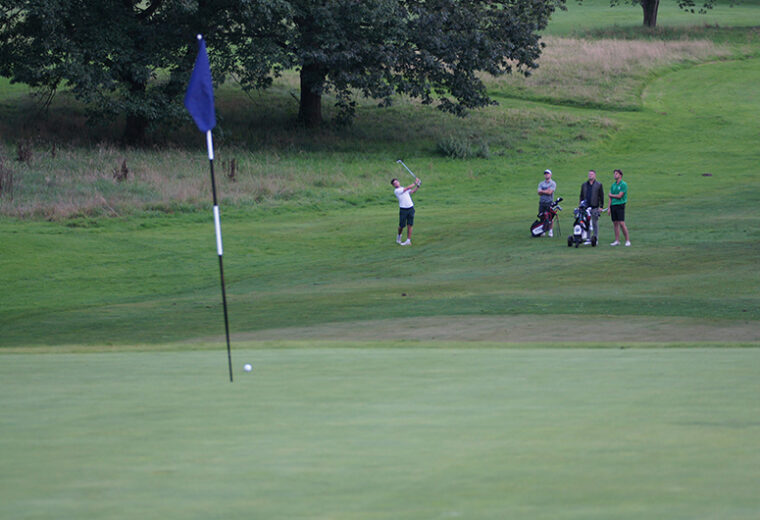
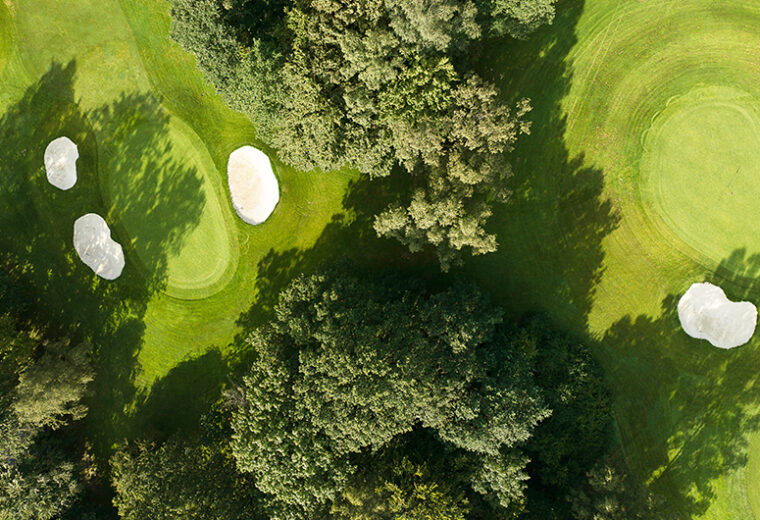
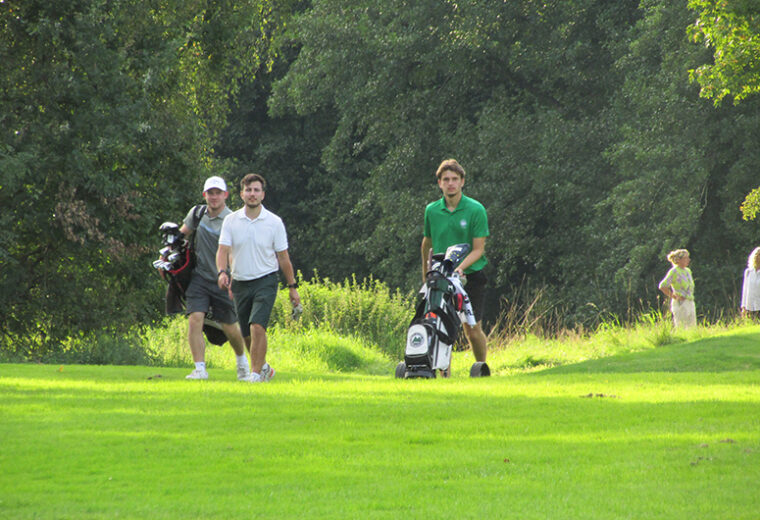
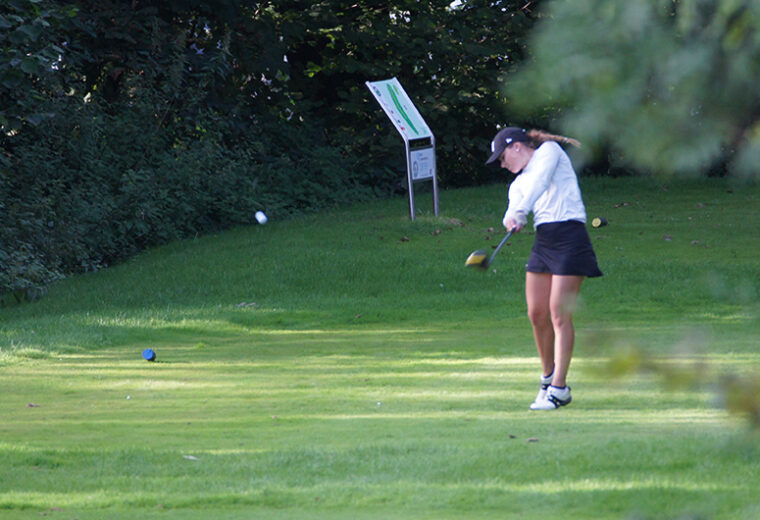
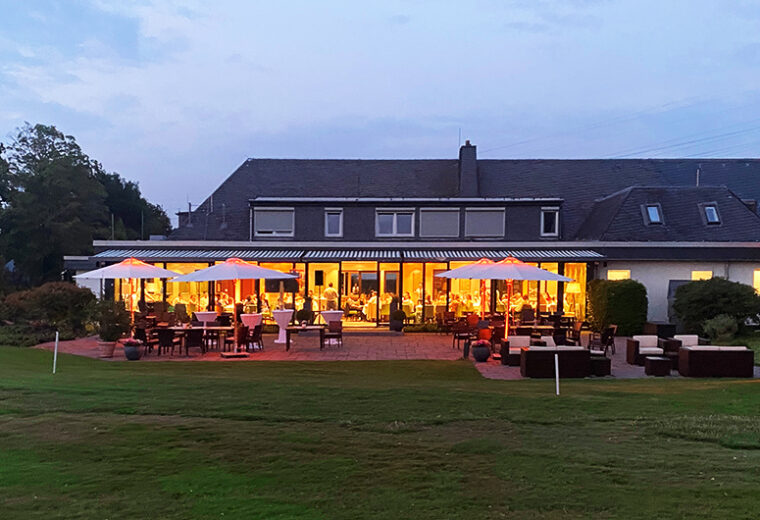
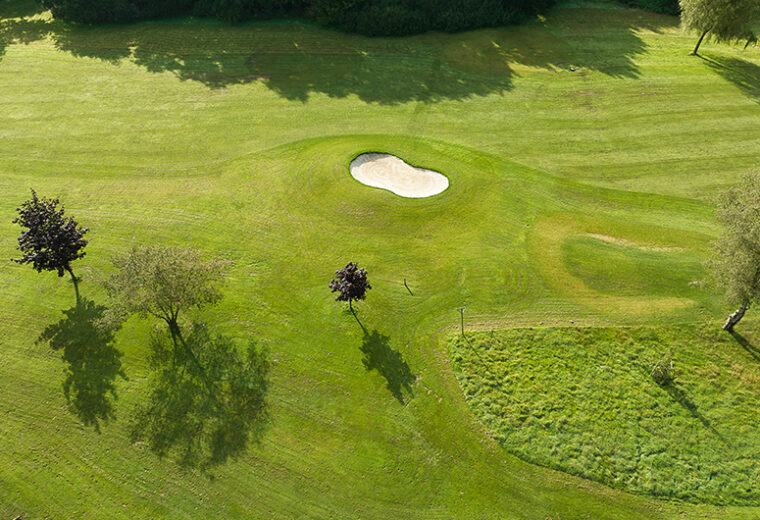
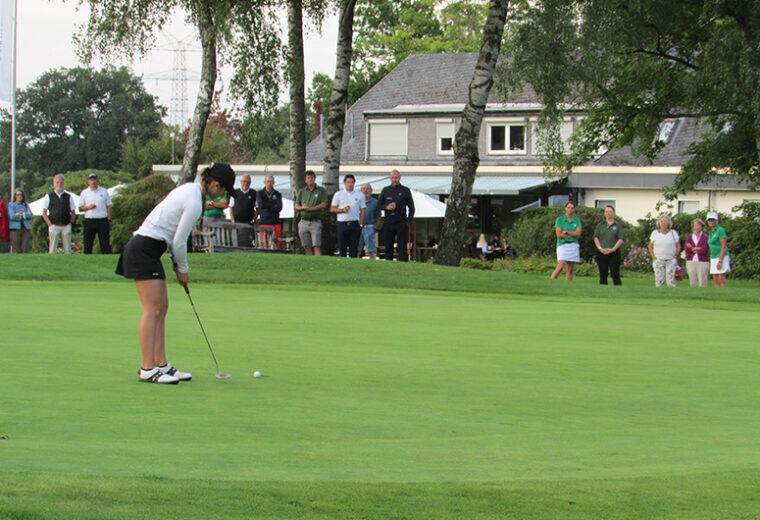
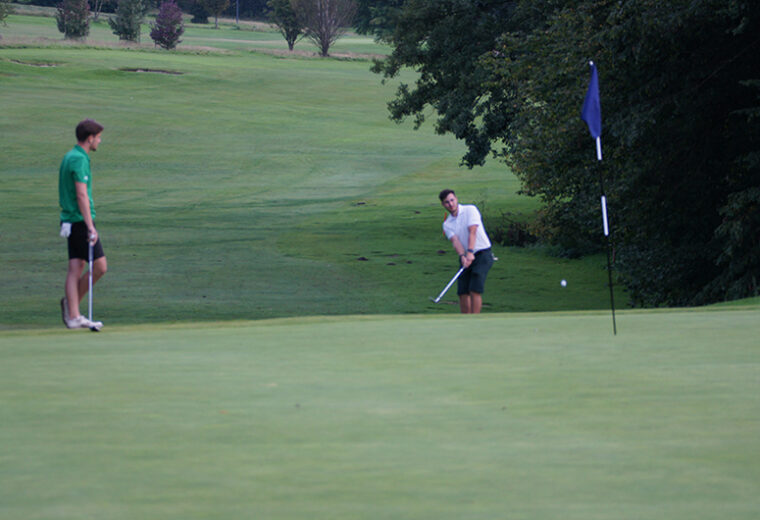
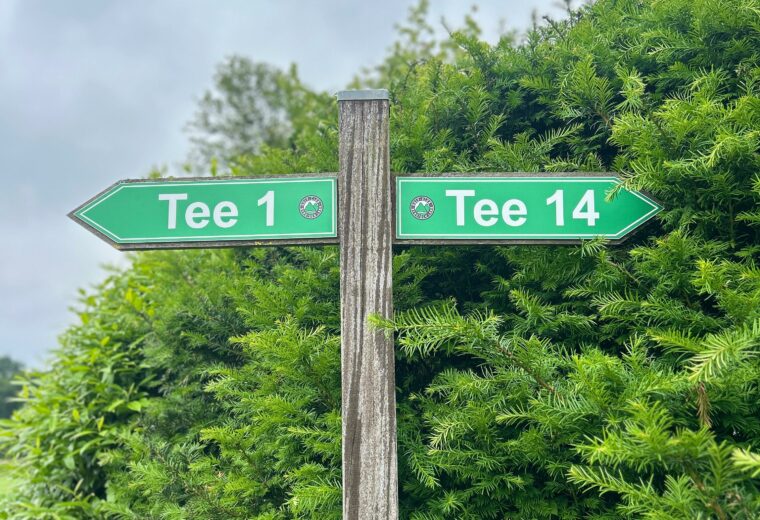

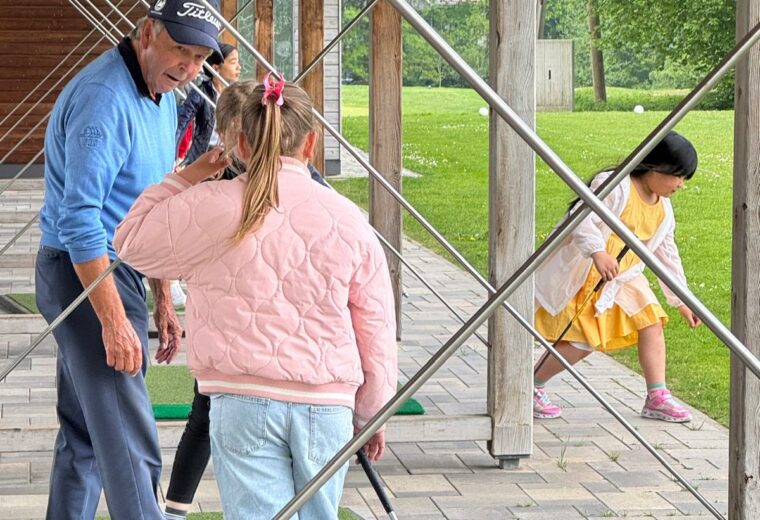

Team Greenkeeping
Team Greenkeeping,
Helden an der Grasnarbe
GREENKEEPER NEWS
Hier finden Sie aktuelle Infos von unseren Greenkeepern.
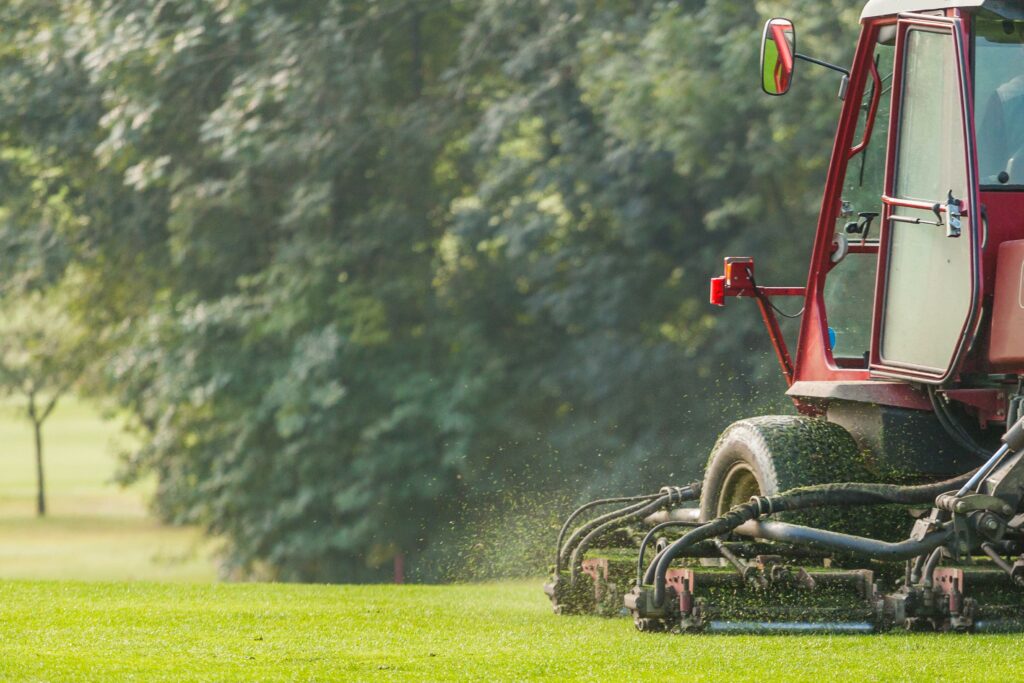

UNSER ANSPRUCH
BESTE QUALITÄT
Unser Greenkeeping-Team hat den Anspruch, Ihnen unseren Golfplatz in bestem Zustand zu präsentieren und begrüßt Sie herzlichst auf unserer Anlage.
I look forward to hearing from you

Corina Gothe
Golf business administrator (DGV)
DOSB-golf manager C
Coordinator Sports & Competitions


